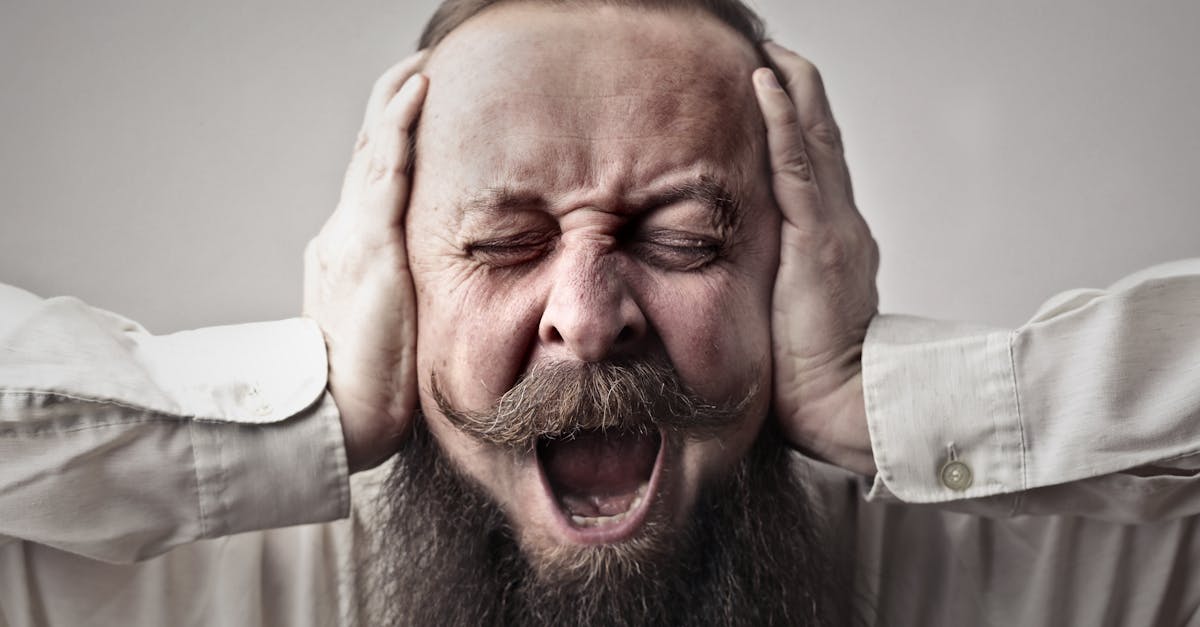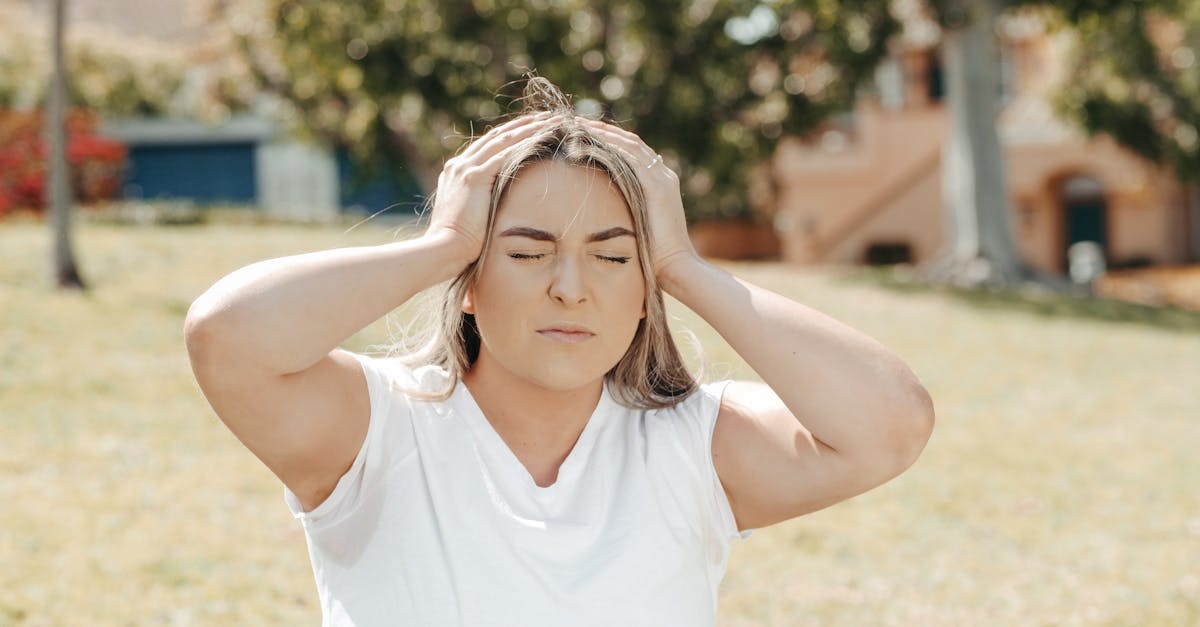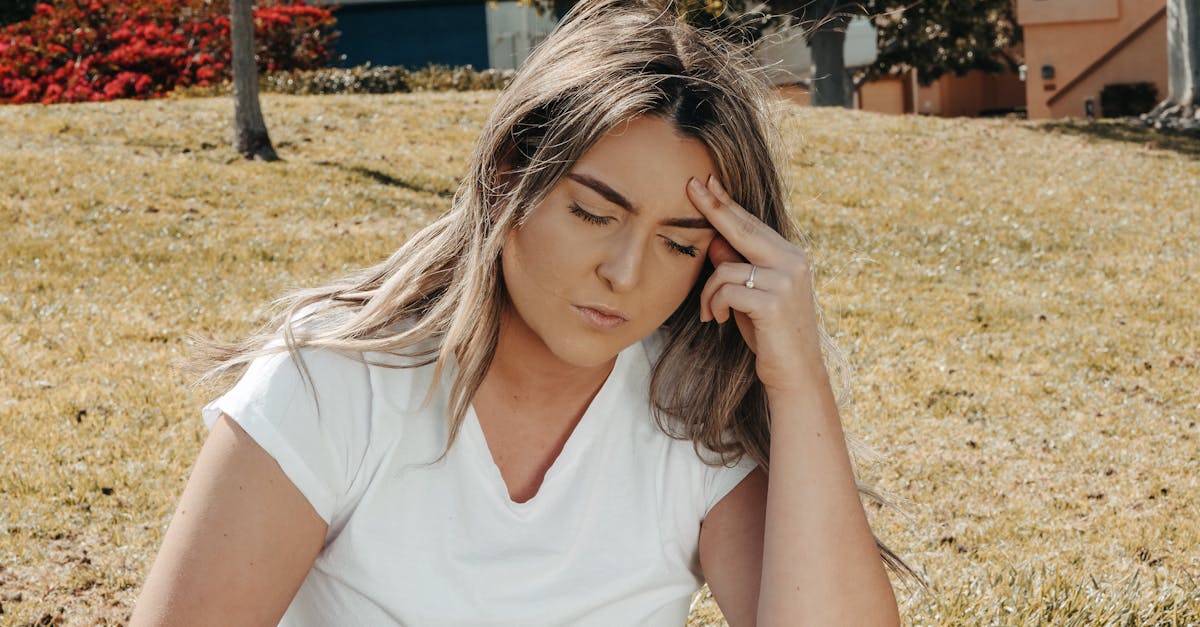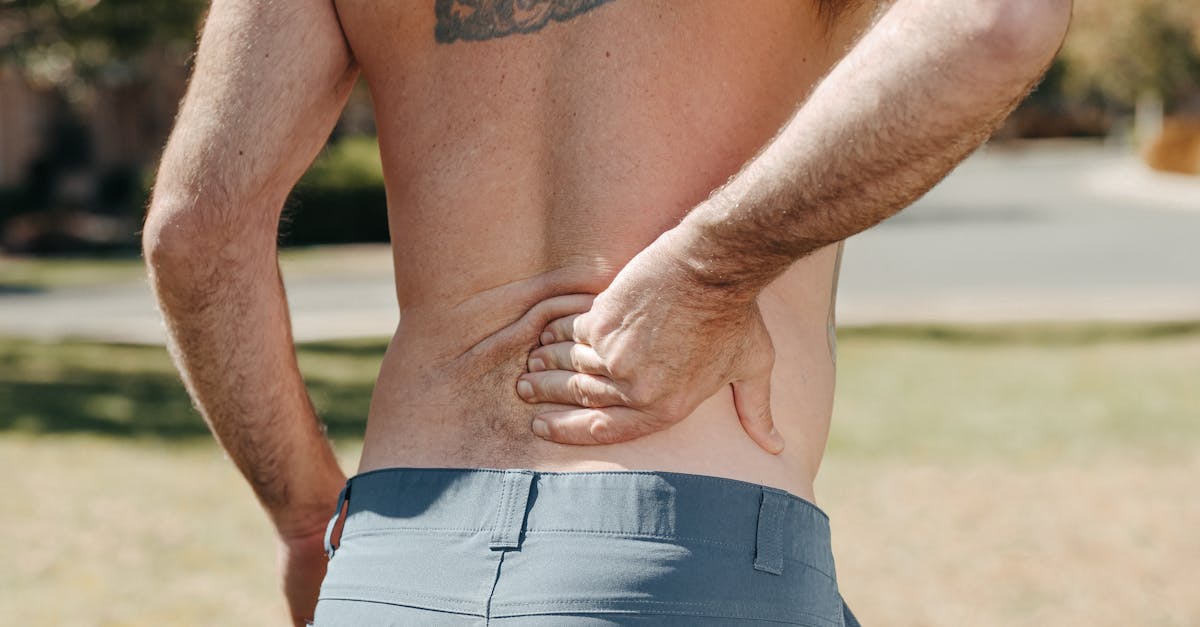In Short: Struggling with migraine pain and discomfort? Discover how Pulse Align’s supportive techniques can effectively provide migraine relief. By focusing on natural headache remedies and addressing common migraine triggers, our innovative approach helps you manage and reduce tension headaches and chronic migraines. Experience the transformative benefits of improved posture and core strength through simple exercises that promote balance and ease. Reclaim your health and wellness at Pulse Align Clinics. BOOK YOUR APPOINTMENT today!
Are you struggling with lower back pain and poor posture?
If you’re seeking 5 Steps to Easing Migraine Pain with Pulse Align’s Supportive Techniques, you’ve come to the right place. Many individuals suffer from various types of headaches, including tension headaches, cluster headaches, and chronic migraines, which can disrupt daily life. By adopting effective strategies like core strengthening and posture correction, you can significantly enhance your chances of achieving migraine relief and alleviating the symptoms that come with it. Discover how Pulse Align empowers its users with natural headache remedies and tailored solutions to combat common headache causes and migraine triggers, fostering a healthier, pain-free lifestyle.

In today’s fast-paced world, posture improvement and neuromuscular recalibration have become essential for maintaining balance and well-being. How we carry ourselves not only affects our physical health but also influences our emotional state. At Pulse Align, we believe that providing holistic solutions can empower you to reclaim your health. With our unique approach, we are committed to guiding you back to a state of balance and comfort.
Understanding the Pulse Align Difference
At the heart of our service is a focus on muscle tone and gentle stimulation. Rather than relying on traditional methods that may feel invasive, our techniques promote the body’s natural ability to find equilibrium. Pulse Align utilizes a gentle, technological, and natural method to enhance your overall wellness by recalibrating muscle tone and symmetry. This process not only works toward improving your posture but may also create an environment where general discomfort subsides and well-being flourishes.
Experience Holistic Benefits
Discover a new way to achieve well-being through a holistic approach that prioritizes your body’s innate healing abilities. Our clients often report improvements in their daily lives, experiencing enhanced quality of movement and overall comfort. Whether you’re looking to reduce neck discomfort or simply improve your posture naturally, Pulse Align serves as a complementary resource in your wellness journey. We invite families—moms, dads, and children of all ages—to explore the numerous advantages of our holistic methods, embracing a more balanced lifestyle.
Client Testimonials: Real Success Stories
Clients have expressed gratitude for the transformations they’ve experienced since utilizing Pulse Align’s services. One client shared, « Since starting with Pulse Align, I noticed an incredible change in how I carry myself and my overall outlook on life! » Such testimonials reflect how our approach can help you feel revitalized, balanced, and equipped to face life’s challenges. Together, we facilitate a natural pathway toward enhanced well-being that aligns with your body’s needs.
Your Path to Wellness Awaits
Are you ready to embark on a wellness journey with Pulse Align? Explore our services and find a Pulse Align clinic near you in cities like Montreal, La Prairie, Terrebonne, Chicoutimi, Charlesbourg, Saint-Jérôme, Châteauguay, Sainte-Marie, Les Escoumins, Granby, and Panama City. We are here to support you and your family every step of the way, ensuring that our methods work in harmony with your healthcare services. Book a consultation today and take the first step toward rejuvenating your life.
- Create a Calm Environment: Turn off lights and minimize sound to soothe your senses.
- Practice Deep Breathing: Engage in deep breathing exercises to reduce stress and tension.
- Stay Hydrated: Drink plenty of fluid to maintain optimal hydration levels.
- Gentle Stretching: Incorporate stretches such as child’s pose to help relax tight muscles.
- Temperature Therapy: Apply hot or cold compresses to your forehead or neck for relief.

Managing migraine pain can often feel overwhelming, yet with the right holistic techniques, relief is attainable. At Pulse Align, we advocate for a balanced approach that incorporates neuromuscular health, posture improvement, and holistic recalibration. This article outlines five effective steps to alleviate migraine discomfort and foster long-term well-being.
Step 1: Create a Calm Environment
One crucial way to ease migraine pain is by establishing a serene atmosphere. Reducing sensory stimuli like bright lights and loud noises can significantly alleviate discomfort. Find a dark, quiet room where you can relax. With fewer distractions, you allow your nervous system to recalibrate, aiding in the relief of tension headaches and other discomfort.
Step 2: Leverage Deep Breathing Techniques
Deep breathing exercises play a vital role in managing migraine triggers. By focusing on your breath, you help shift your body from a state of tension to one of relaxation. This practice not only reduces stress but also promotes oxygen flow, which can ameliorate nausea with headache symptoms. Integrate these techniques into your daily routine for a significant boost in overall health and well-being.
Step 3: Utilize Temperature Therapy
Applying either hot or cold compresses can provide immediate comfort for migraine sufferers. Cold packs are particularly effective for chronic migraines, as they can numb the area and reduce inflammation. Conversely, heat therapy alleviates tension associated with cluster headaches. Find what works best for you; alternating between the two might offer the best results.
Step 4: Engage in Core Strengthening Exercises
Strengthening your core through targeted exercises can enhance natural balance and reduce physical strain on your neck and shoulders, an area often affected by tension linked to vestibular migraines. Try including trunk exercises like planks or bridges. These engage the abdominal muscles and promote posture correction, reducing the risk of migraines caused by poor alignment.
Step 5: Explore Natural Remedies
Incorporating strategies such as the use of essential oils for headaches can complement your migraine management plan. Oils like lavender and peppermint may offer soothing effects that enhance relaxation. Additionally, adhering to a migraine diet—identifying and avoiding foods that trigger migraines—can help reduce the frequency of episodes, especially for those prone to menstrual migraines or aura migraines.
Take Charge of Your Migraines
By utilizing these five supportive techniques from Pulse Align, individuals can begin to reclaim their lives from the grip of migraine pain. We encourage you to adopt these practices to promote headache relief, enhance neuromuscular health, and cultivate a balanced lifestyle. For personalized guidance and tailored exercise plans, consider scheduling a consultation with our team today. Your path to wellness starts here!
| Steps | Description |
| 1. Create a Calm Environment | Eliminate light and sound to promote relaxation. |
| 2. Stay Hydrated | Drink plenty of fluids to help ease headache symptoms. |
| 3. Practice Deep Breathing | Engage in controlled breathing to reduce stress levels. |
| 4. Gentle Yoga Stretches | Incorporate stretches like child’s pose to relieve tension. |
| 5. Temperature Therapy | Use hot or cold compresses to alleviate headache pain. |

Transformative Wellness Journeys with Pulse Align
Clients from all walks of life have shared their inspiring experiences with Pulse Align’s unique techniques, emphasizing how they have found natural relief from migraine pain. In the serene environment of La Prairie, many individuals have reported remarkable improvements in their well-being, attributing their newfound sense of balance to the supportive methods offered by Pulse Align. Through proper guidance, clients integrate deep breathing, meditation, and essential stretches that not only alleviate their immediate discomfort but also help in recalibrating their bodies.
Residents of Mont-Royal have highlighted the importance of creating a calm atmosphere, often retreating to quiet spaces to practice relaxation techniques taught by Pulse Align. This simple yet potent approach has enabled clients to develop a deeper connection with their bodies, allowing them to manage migraines more effectively over time. The community aspect of Pulse Align further fosters a supportive environment where individuals can share their milestones and challenges.
In the picturesque town of Terrebonne, clients have expressed gratitude for the holistic methodology practiced at Pulse Align. By focusing on core strengthening exercises and gentle yoga, they enhance their body’s natural resilience. This shift not only addresses physical tension but also promotes mental clarity. Clients feel empowered to reclaim their lives, as their journey towards wellness becomes a shared experience filled with positivity.
In Chicoutimi, members of the community have turned to Pulse Align’s team, emphasizing the value of collaborative care. Here, healthcare professionals and Pulse Align work in tandem, offering innovative techniques that stimulate the body’s natural healing process. Clients report that integrating these practices into their daily routines has provided significant relief and has contributed to an improved quality of life.
Every day, new testimonials emerge from clients in locations like Châteauguay and Saint-Jérôme, celebrating the life-changing effects of the holistic practices at Pulse Align. Families have noticed that not only do these techniques support individual wellness, but they also enhance the collective health of their loved ones. The feedback is overwhelmingly positive, with clients crediting Pulse Align as an essential partner in their wellness journey.
The commitment to wellness and holistic recovery runs deep within the Pulse Align community, and clients from diverse regions, including Deux-Montagnes and Sainte-Marie, are witnessing their natural ability to recalibrate and restore balance. If you are in these areas and seek to enhance your overall well-being, consider exploring the transformative potential of Pulse Align. Together, we can navigate the journey towards alleviating migraine pain and achieving optimal health.
To learn more about our services and locations, visit Our Clinics. Pulse Align is dedicated to supporting clients and their families every step of the way.
Simple Ways Pulse Align Can Enhance Your Headache Management
At Pulse Align, we understand the challenges that headaches and migraines can bring to everyday life. Our approach focuses on integrating holistic strategies that not only target symptoms but also work on the fundamental aspects contributing to discomfort. Techniques such as deep breathing, meditation, and gentle yoga are incorporated into our programs, effectively reducing stress and fostering relaxation, ultimately assisting in managing conditions such as vestibular migraines.
Five Tips for Headache Relief
Implementing core strengthening exercises plays a crucial role in enhancing your body’s balance. This not only alleviates strain on your neck and shoulders but also sets the foundation for better overall posture. For instance, practicing stretches like the seated forward fold, child’s pose, and downward-facing dog helps to release tension in the upper back muscles, a common source of headache triggers.
Creating a calm environment is paramount for mitigating migraine symptoms. When experiencing discomfort, turning off bright lights and minimizing sound by resting in a dark, quiet room can provide significant relief. Additionally, using temperature therapy by applying hot or cold compresses to the forehead or neck can further help in alleviating pain.
Staying adequately hydrated also plays a vital role in managing headaches. Drinking fluids regularly can stave off dehydration, which is a well-known headache trigger. Incorporating these elements into your daily routine can contribute to a balanced lifestyle, ultimately leading to fewer headaches and a more fulfilling life.
Our Mission
At Pulse Align, our mission is to deliver evidence-based, client-centered treatments that address the underlying causes of pain and dysfunction. By integrating advanced techniques and technologies, we strive to empower each person to take control of their health, ensuring a high standard of care, lasting relief, and an improved quality of life.
Discover the Benefits of TAGMED’s Spinal Decompression Therapy for Chronic Pain Relief
At TAGMED, we offer advanced Spinal Decompression Therapy, a non-surgical solution tailored specifically for individuals dealing with moderate to severe disc issues such as herniated discs, bulging discs, and foraminal stenosis. This innovative approach gently alleviates pressure on affected discs and nerves, enhancing mobility and relieving pain while supporting your body’s natural healing process. If conventional treatments have not provided lasting relief, learn how TAGMED’s evidence-based decompression method can help you regain comfort and activity in your life.
Have you tried conventional treatments and still struggle with persistent back pain due to a severe disc condition?
Mechanism of Action
TAGMED’s neurovertebral decompression applies a controlled, progressive traction force to the spine. This unique method increases the space between vertebrae, effectively reducing pressure on intervertebral discs and nerve roots. The resulting enhancement in fluid circulation in the targeted area aids in lowering inflammation and alleviating pain. This reliable, non-invasive solution is ideal for individuals suffering from various chronic back pain conditions.
Specific Benefits
This non-invasive approach stands out as an effective means to alleviate chronic pain and symptoms associated with conditions like degenerative disc disease and spinal stenosis. By minimizing pressure on nerve structures and optimizing fluid circulation around the discs, TAGMED’s therapy expedites recovery while enhancing the overall quality of life for patients seeking relief from persistent discomfort.
Comparison with Other Treatments
When evaluating the effectiveness of TAGMED’s neurovertebral decompression technology, it is important to consider traditional treatment options such as pain medications, corticosteroid injections, surgery, or standard physiotherapy. Unlike these methods, neurovertebral decompression involves no invasive interventions, which significantly minimizes medication-related risks. Furthermore, patients often experience a potentially faster path to recovery, making TAGMED an appealing choice for those seeking safer, evidence-based alternatives.
Case Studies or Testimonials
Several patients have experienced remarkable improvements with TAGMED’s neurovertebral decompression. Testimonials reveal lasting pain relief, a quicker return to daily activities, and a reduced reliance on pharmaceuticals. These real-world accounts underscore the tangible results and compelling benefits of this therapeutic approach, making it an attractive solution for sciatica, facet syndrome, and other chronic pain conditions.
Embrace the opportunity for a pain-free life by exploring TAGMED’s spinal decompression therapy today.
Unlocking Natural Relief for Migraines with Pulse Align
Pulse Align provides a nurturing approach that empowers individuals to manage migraine discomfort through five essential steps. These supportive techniques focus on posture correction, fostering a state of relaxation, and creating a calm environment. Participants have reported enhanced wellness and holistic health by incorporating neuromuscular recalibration practices into their routines.
By embracing natural pain relief strategies, clients have experienced improved posture, reduced discomfort, increased mobility, and a profound sense of well-being. Pulse Align promotes an understanding of the body’s inherent abilities to heal, creating a pathway for individuals to reclaim comfort and confidence in their daily lives.
At Pulse Align, our clients frequently share their positive experiences, highlighting the gentle and non-invasive nature of our approach. We prioritize their journey towards wellness and equip them with the tools to support their health goals. Whether dealing with occasional headaches or chronic discomfort, our methods foster a nurturing environment that encourages personal growth and healing.
Are you ready to take the next step towards a more balanced and healthier life? Discover the Pulse Align difference today. Schedule your consultation now and learn how our holistic health solutions can help you reclaim your vitality. Your journey towards well-being begins here.

Do you suffer from a chronic condition that responds little or not at all to conservative treatments?
At Pulse Align, we understand the quest for effective solutions to balance and well-being. Our non-invasive and innovative methods harness gentle, imperceptible pulses designed to restore your body’s natural equilibrium and posture. By focusing on enhancing muscle tone symmetry and improving alignment, our approach aids in alleviating tension throughout the body, promoting overall ease and comfort from within.
What sets Pulse Align apart is our philosophy of supporting the body’s innate ability to recalibrate itself. We emphasize a holistic path, steering clear from the direct management of discomfort, conditions, or sensations. Instead, our techniques strive to provide you with an environment conducive to noticeable improvements in posture and body balance, leading to enhanced comfort and well-being.
Pulse Align’s individualized approach has touched countless lives, as evidenced by heartfelt testimonials from clients who’ve embraced our services. Many have reported significant improvements in issues such as neck tension and general discomfort, praising the calm and supportive atmosphere we cultivate. With a focus on nurturing wellness for the entire family, including children and expectant mothers, our methods are designed to fit seamlessly into your family’s wellness journey.
To discover the transformative potential of Pulse Align’s services, we invite you to visit our website. Explore our different locations in cities like La Prairie, Mont-Royal, and Terrebonne, and take a step towards a balanced lifestyle. Please remember, Pulse Align complements your healthcare services, working alongside your existing care team to support your journey to well-being. We encourage you to book an appointment online today for a consultation, where you can further learn how our safe and family-friendly approach can benefit you and your loved ones.
Frequently Asked Questions
Maux de tête et migraines
- Les hormones influencent-elles les migraines ?Oui, les fluctuations hormonales, notamment chez les femmes, peuvent déclencher des migraines (migraines menstruelles).
- Les migraines sont-elles héréditaires ?Oui, la prédisposition aux migraines peut être génétique, rendant certaines personnes plus susceptibles d’en souffrir.
- La déshydratation cause-t-elle des maux de tête ?Oui, un manque d’hydratation adéquate peut provoquer des maux de tête et aggraver les migraines.
- Les migraines peuvent-elles disparaître avec l’âge ?Chez certaines personnes, les migraines deviennent moins fréquentes et moins intenses avec le temps.
- Les analgésiques en vente libre sont-ils efficaces ?Ils peuvent soulager un mal de tête occasionnel, mais leur usage fréquent risque de provoquer des céphalées rebond.
- Les écrans filtrant la lumière bleue sont-ils utiles ?Ils réduisent la fatigue visuelle, pouvant ainsi diminuer le risque de déclenchement d’un mal de tête.
- Les traitements triptans sont-ils efficaces ?Les triptans sont des médicaments spécifiques qui agissent sur les récepteurs de la sérotonine, souvent efficaces pour stopper une crise migraineuse.
- La pratique sportive régule-t-elle les migraines ?L’exercice modéré régulier réduit le stress, améliore la circulation, et peut diminuer la fréquence des migraines.
- Les migraines peuvent-elles survenir la nuit ?Oui, certaines personnes se réveillent avec une migraine, parfois liée à des troubles du sommeil.
- Les massages aident-ils à soulager les maux de tête ?Un massage doux du cou, des épaules ou du cuir chevelu peut diminuer la tension musculaire et soulager un mal de tête.
References
- Kolding, L. T., Do, T. P., Ewertsen, C., & Schytz, H. W. (2018). Muscle stiffness in tension-type headache patients with pericranial tenderness: A shear wave elastography study. Cephalalgia Reports, 1, 2515816318760293. https://doi.org/10.1177/2515816318760293
- Pradhan, S., & Choudhury, S. S. (2018). Clinical characterization of neck pain in migraine. Neurology India, 66(2), 377–384. https://journals.lww.com/neur/fulltext/2018/66020/clinical_characterization_of_neck_pain_in_migraine.19.aspx
- Al-Khazali, H. M., Al-Sayegh, Z., Younis, S., Christensen, R. H., Ashina, M., Schytz, H. W., & Ashina, S. (2024). Systematic review and meta-analysis of Neck Disability Index and Numeric Pain Rating Scale in patients with migraine and tension-type headache. Cephalalgia, 44(8), 03331024241274266. https://doi.org/10.1177/03331024241274266
- Lin, L.-Z., Yu, Y.-N., Fan, J.-C., Guo, P.-W., Xia, C.-F., Geng, X., Zhang, S.-Y., & Yuan, X.-Z. (2022). Increased stiffness of the superficial cervical extensor muscles in patients with cervicogenic headache: A study using shear wave elastography. Frontiers in Neurology, 13, 874643. https://www.frontiersin.org/articles/10.3389/fneur.2022.874643/full
- Yu, Z., Wang, R., Ao, R., & Yu, S. (2019). Neck pain in episodic migraine: a cross-sectional study. Journal of Pain Research, Volume 12, 1605–1613. https://doi.org/10.2147/JPR.S200606
- Balaban, M., Celenay, S. T., Lalecan, N., Akan, S., & Kaya, D. O. (2024). Morphological and mechanical properties of cervical muscles in fibromyalgia with migraine: A case-control study. Musculoskeletal Science and Practice, 74, 103185. https://www.sciencedirect.com/science/article/pii/S2468781224002807
- Florencio, L. L., De Oliveira, A. S., Carvalho, G. F., Tolentino, G. D. A., Dach, F., Bigal, M. E., Fernández‐de‐las‐Peñas, C., & Bevilaqua Grossi, D. (2015). Cervical Muscle Strength and Muscle Coactivation During Isometric Contractions in Patients With Migraine: A Cross‐Sectional Study. Headache: The Journal of Head and Face Pain, 55(10), 1312–1322. https://doi.org/10.1111/head.12644
- Zwart, J. (1997). Neck Mobility in Different Headache Disorders. Headache: The Journal of Head and Face Pain, 37(1), 6–11. https://doi.org/10.1046/j.1526-4610.1997.3701006.x
- Aoyama, N. (2021). Involvement of cervical disability in migraine: a literature review. British Journal of Pain, 15(2), 199–212. https://doi.org/10.1177/2049463720924704
- Al-Khazali, H. M., Younis, S., Al-Sayegh, Z., Ashina, S., Ashina, M., & Schytz, H. W. (2022). Prevalence of neck pain in migraine: A systematic review and meta-analysis. Cephalalgia, 42(7), 663–673. https://doi.org/10.1177/03331024211068073
- Fernández‐de‐las‐Peñas, C., Cuadrado, M. L., & Pareja, J. A. (2007). Myofascial Trigger Points, Neck Mobility, and Forward Head Posture in Episodic Tension‐Type Headache. Headache: The Journal of Head and Face Pain, 47(5), 662–672. https://doi.org/10.1111/j.1526-4610.2006.00632.x
- Hvedstrup, J., Kolding, L. T., Ashina, M., & Schytz, H. W. (2020). Increased neck muscle stiffness in migraine patients with ictal neck pain: A shear wave elastography study. Cephalalgia, 40(6), 565–574. https://doi.org/10.1177/0333102420919998
- Choi, S.-Y., & Choi, J.-H. (2016). The effects of cervical traction, cranial rhythmic impulse, and Mckenzie exercise on headache and cervical muscle stiffness in episodic tension-type headache patients. Journal of Physical Therapy Science, 28(3), 837–843. https://www.jstage.jst.go.jp/article/jpts/28/3/28_jpts-2015-893/_article/-char/ja/
- Martínez-Merinero, P., Aneiros Tarancón, F., Montañez-Aguilera, J., Nuñez-Nagy, S., Pecos-Martín, D., Fernández-Matías, R., Achalandabaso-Ochoa, A., Fernández-Carnero, S., & Gallego-Izquierdo, T. (2021). Interaction between pain, disability, mechanosensitivity and cranio-cervical angle in subjects with cervicogenic headache: A cross-sectional study. Journal of Clinical Medicine, 10(1), 159. https://www.mdpi.com/2077-0383/10/1/159
- Fernández-de-las-Peñas, C., Cuadrado, M., & Pareja, J. (2006). Myofascial Trigger Points, Neck Mobility and Forward Head Posture in Unilateral Migraine. Cephalalgia, 26(9), 1061–1070. https://doi.org/10.1111/j.1468-2982.2006.01162.x
- Bjarne, B. (2024). NECK MUSCLE ELASTICITY IN CERVICOGENIC HEADACHE PATIENTS MEASURED BY SHEAR WAVE ELASTOGRAPHY [PhD Thesis, Ghent University]. https://libstore.ugent.be/fulltxt/RUG01/003/202/979/RUG01-003202979_2024_0001_AC.pdf
- Calhoun, A. H., Ford, S., Millen, C., Finkel, A. G., Truong, Y., & Nie, Y. (2010). The Prevalence of Neck Pain in Migraine. Headache: The Journal of Head and Face Pain, 50(8), 1273–1277. https://doi.org/10.1111/j.1526-4610.2009.01608.x
- Ashina, S., Bendtsen, L., Lyngberg, A. C., Lipton, R. B., Hajiyeva, N., & Jensen, R. (2015). Prevalence of neck pain in migraine and tension-type headache: A population study. Cephalalgia, 35(3), 211–219. https://doi.org/10.1177/0333102414535110
- Fernández-de-las-Peñas, C., Madeleine, P., Caminero, A., Cuadrado, M., Arendt-Nielsen, L., & Pareja, J. (2010). Generalized Neck-Shoulder Hyperalgesia in Chronic Tension-Type Headache and Unilateral Migraine Assessed by Pressure Pain Sensitivity Topographical Maps of the Trapezius Muscle. Cephalalgia, 30(1), 77–86. https://doi.org/10.1111/j.1468-2982.2009.01901.x
- Luedtke, K., Starke, W., & May, A. (2018). Musculoskeletal dysfunction in migraine patients. Cephalalgia, 38(5), 865–875. https://doi.org/10.1177/0333102417716934




